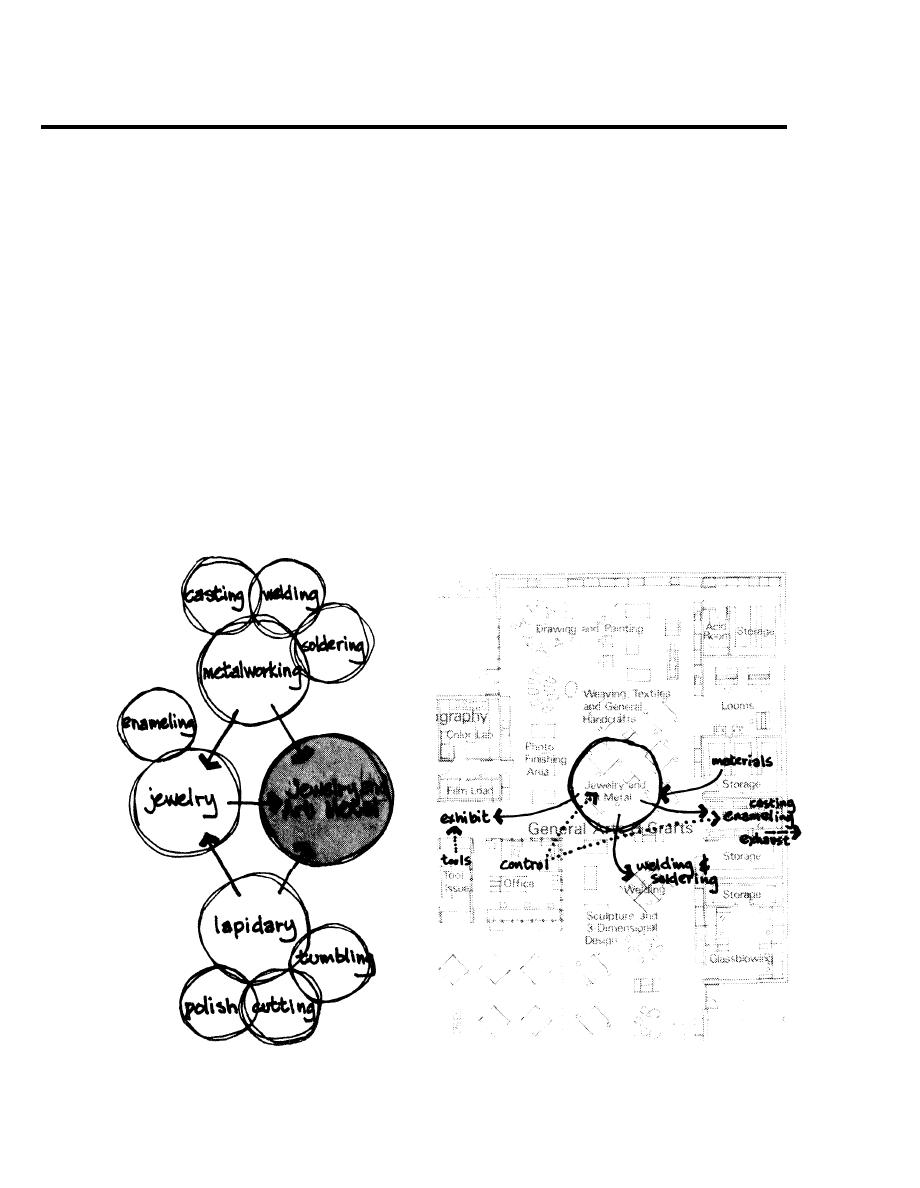
I
Page 33
DG 1110-3-124
August 1976
g.
TECHNOLOGICAL
REQUIREMENTS
f. FURNISHINGS EQUIPMENT
Grinding arbors and grinding/polishing units require pres-
Much of the jewelry work can be done at standard work
sure water connections which is preferable to a siphon
counters with accessory V-blocks, anvils, gas fixtures and
water system. A sediment sink is necessary for washing
vises attached. Alternatively, two to four jeweler's work-
stones and castings, mixing casting investment and clean-
benches can be provided in the general work space. At
ing metals. Toxic chemicals must be disposed through
least one asbestos-covered work top is needed, Hot metal
acid-resistant sinks and piping. Exhausts are required for
casting requires furnaces which should be vented. Slab
hot metal casting equipment, ovens, torches, and spray
saws and flat laps are floor mounted items. Combination
booths. Some electric kilns and lapidary equipment may
lapidary units can perform several operations but limit the
require 220 volts but most jewelry equipment requires
number of active participants. Therefore in a large shop,
110 volts. Supplies of oxygen, gas and compressed air are
separate lapidary units for cutting, grinding, polishing and
required. In addition to normal lighting levels, concen-
buffing are preferable. Water connections are required for
trated local lighting is required for delicate tasks.
some grinders. Buffing machines, drill presses, trim saws,
centrifugal and vacuum casting machines, faceting
machine, grinding arbors, burn out kilns, sanders and gem
tumblers can all be bench mounted. Lapidary equipment
should be so placed as to facilitate the progression of
operations from dabbing, trimming and grinding through
polishing and faceting.
Activities



 Previous Page
Previous Page
